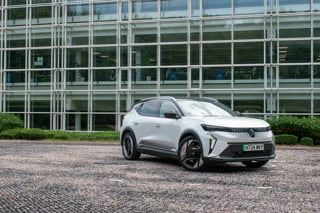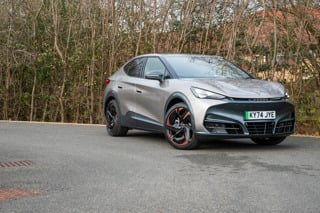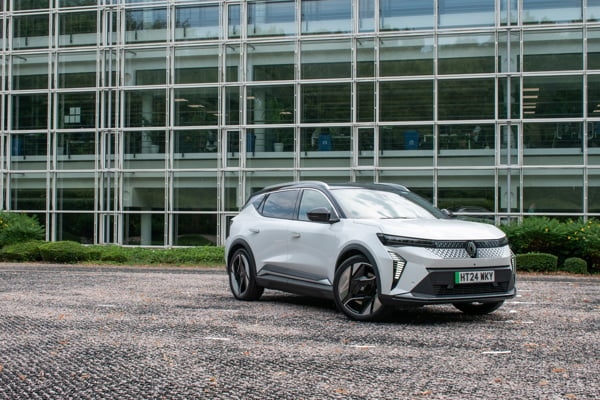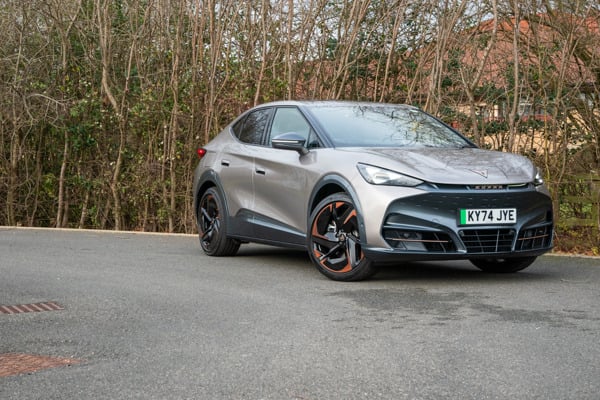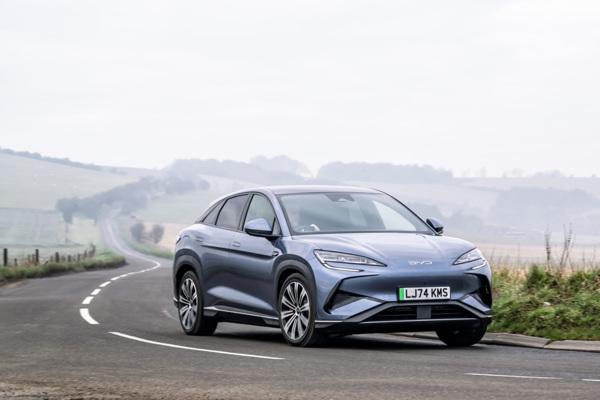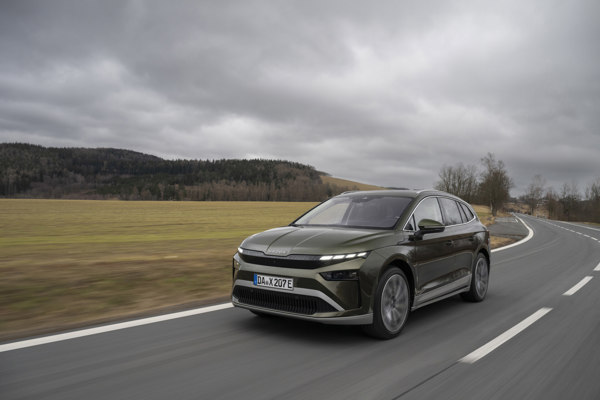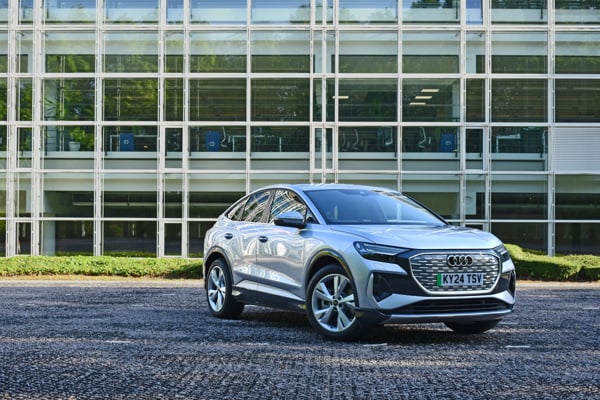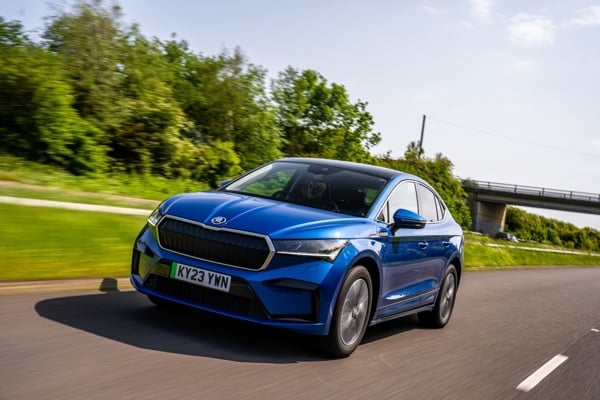Review
Renault has taken the brief for a desirable and family-friendly electric car and fulfilled it perfectly with the new Scenic.
Overview
Having recently been crowned European Car of the Year, we weren’t expecting to be disappointed by the new Scenic. But our first impressions are that it’s going to be “one to watch” this year.
A stylish exterior gives the Scenic a distinctive look that separates it from the Megane, despite the cars sharing a platform. It’s a good-looking vehicle that presents as an upmarket model, which should make it a desirable company car choice.
![]()
Renault is offering the car with two battery options, two power outputs and a choice of three trim levels.
It is priced from £37,495, making it a rival for other electric SUVs like the Peugeot e-3008 and Tesla Model Y, but also a competitor for hybrid models of the Hyundai Tucson, Kia Sportage and Nissan Qashqai.
Comfort and practicality
Ride and refinement are two areas where the Megane excelled and, with the Scenic, Renault has worked the same magic. The Scenic is a quiet and comfortable car, on the move, with plenty of space in for passengers and a large 545-litre boot.
The cabin is uncluttered and airy, giving a modern and upmarket feel. There are premium-grade materials and design features to give the Scenic an edge over mainstream rivals.
At night, the ambient lighting bathes the car in a soft glow, while the large windows and glass roof add to the spacious feel during the day.
There’s no leather inside the Scenic, with Renault opting for recycled and more environmentally responsible material choices. More than a quarter of the interior plastics are made from recycled materials and, aside from a slightly cheap-feeling headliner, the strategy doesn’t affect perceived quality.
The front seats are separated by a large armrest and storage compartment, with additional storage bins located in the doors aiding practicality.
![]()
In the rear, there’s an array of pockets on the front seatbacks and a clever armrest design that incorporates fold-out holders for phones or tablets along with integrated USB ports. Folding the armrest away reveals a third rear seat.
The standard specification includes climate control, heated front seats and a heated steering wheel.
Safety and technology
If Renault is to be commended for any one particular aspect of the new Scenic then it’s undoubtedly the quick access switch that can be used to tailor the driver assistance systems.
In order to meet current regulatory requirements, the Scenic is equipped with the usual array of lane departure warning, speed limit warning and all manor of other 'aids' that beep and flash warning messages at you while driving.
As in most cars, disabling these often-distracting systems requires a delve into the many menus and submenus in the infotainment touchscreen every time you start a journey. Renault’s engineers have found a much a simpler way, however. You simply set your preferences once – choosing which systems you want active or not - then all you have to do is double tap a button to the right of the steering wheel to apply your settings. It’s a brilliant solution.
![]()
The car’s cockpit is digitally led, with a large 12-inch portrait touchscreen at the centre. It runs a Google-powered operating system with high resolution graphics and a neat menu structure. There’s a second, equally impressive, display behind the steering wheel, which can be customised to show the sat-nav map, trip computer or just conventional instruments.
To reduce reliance on the touchscreen, Renault has added a row of quick access keys beneath the display for fast access to key functions like the temperature and demister.
Included in the standard specification is adaptive cruise control with lane centring, blind spot monitor, a rear-view camera and Renault’s handsfree keycard system.
The car’s party-piece is found only on the range topping Iconic grade, however. It’s the Solarbay sunroof. Using special liquid-crystal technology, the glass roof can be opacified, in sections, at the touch of a button. It means there’s no need for a physical rollerblind and it is a feature unique to the Scenic.
Driveability and range
Renault offers two powertrain options for the Scenic E-Tech. The first pairs a 60kWh battery with a 170PS motor. It’s known as the Comfort Range and is only available in the entry-level trim grade.
The second option, available in all three grades, is the Long Range. It’s the predicted best-seller, using an 87kWh battery and a 220PS motor.
The Comfort Range can cover up to 260 miles on a single charge, while the Long Range boasts a 379-mile range.
There’s not a huge performance difference between the two, with the heavier, but more powerful, Long Range hitting 62mph from rest in 7.9 seconds. The Comfort Range takes 8.6 seconds. There’s a 100Kg weight difference between the two, but even the Long Range is a relative leightweight in this segment. At 1.85 tonnes, it’s around 300Kg lighter than the Peugeot e-3008.
![]()
While the weight benefits efficiency, it also helps with ride and handling. The Scenic’s suspension doesn’t have to work so hard, so it rides gracefully while also keeping body roll in check.
There’s a dynamic edge to the Scenic, bolstered by its very quick steering. The car has a reassuring feel and adequate grip levels. You have to push it quite hard to realise the limitations of its front-wheel-drive configuration.
Acceleration is very progressive. From a dead stop the throttle response feels a little lacking, but the car is more eager in the mid-range, making for safe and quick overtakes.
Our testing showed an average consumption of 3.5mi/kWh, in the Long Range car. This suggests a real-world range in excess of 300 miles should be quite easy to achieve.
Company car tax and running costs
We don’t have the full running costs data for the new Scenic yet, but based on its p11d price alone we’re expecting it to be among the most cost-effective models in its segment.
The entry-level Techno grade comes with a generous level of standard equipment, including a heat pump and a 22kW on board charger, for significantly less than many rival vehicles.
Even the range topping Iconic version represents great value, with its long range and additional toys such as a Harman Kardon stereo, 360-degree camera system and that clever sunroof, we’re hard-pressed to find anything else that’s as compelling right now.
Charging speeds
3-pin plug: 44.5 hours
7kW wallbox: 14 hours
22kW AC: 4.75 hours
Rapid (150kW max): 40 mins (10%-80%)
Figures shown for Long Range version
Specs
| Manufacturer | Renault |
| Model | Scenic E-Tech Estate |
| Specification | Renault Scenic E-Tech Estate 160kW Techno 87kWh Long Range 5dr Auto |
| Model Year | 2023.00 |
| Annual VED (Road tax) | £10 |
| BIK List Price | £40,930 |
| Range | 379.00mile(s) |
| CO2 | N/A |
| BIK Percentage | 2% |
| Insurance Group | N/A |
| CC | 1 |
| Fuel Type | Electric |
| Vehicle Type | Medium SUV |
| Luggage capacity (Seats up) | 545litres |
| Doors | 5 |
Running Costs
| P11D | £40,930 |
| Cost per mile | 41.30ppm |
| Residual value | £19,425 |
| Insurance group | N/A |
| Fuel Type | Electric |
| Cost per mile | 117.99ppm |
| Fuel | 2.49ppm |
| Depreciation | 114.35ppm |
| Service maintenance and repair | 1.15ppm |
Rivals
Info at a glance
-
P11D Price
£40,930
-
MPG
N/A (WLTP) -
CO2 Emissions
N/A -
BIK %
2% -
Running cost
3 Year 60k : £19,425 4 Year 80k : £15,825 -
Fuel Type
Electric -
Range
379.00mile(s)





